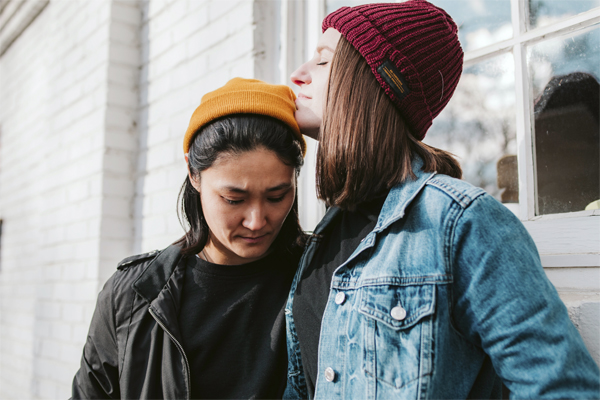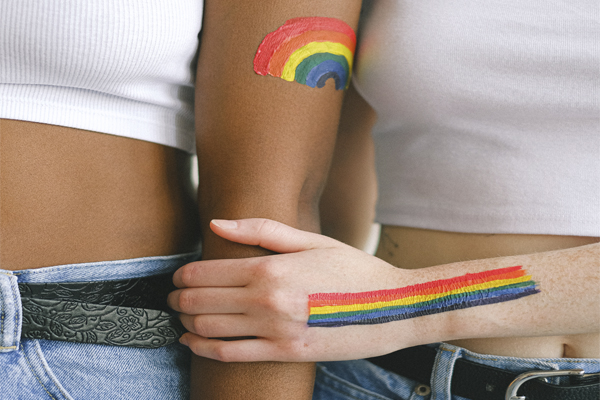New research has revealed that visual representation of the LGBTQ+ community remains ‘low’, ‘inauthentic’ and ‘stereotypical’, worldwide.
The latest research from Getty Images, launched to coincide with Pride 2021, reveals that only 21% of the population worldwide see LGBTQ+ people represented regularly; and when they do, the representations remain narrow, inauthentic and stereotypical. That number is higher in the US, sitting at one quarter, according to Getty Images’ 2021 Visual GPS survey. The research also found that 30% of visuals depict gay men as ‘feminine’; 29% depict LGBTQ+ people carrying the rainbow flag in some capacity; 29% of such visuals depict lesbian women as ‘masculine’; and 28% of such visuals depict gay men as ‘flamboyant’.
So Getty Images has joined forces with GLAAD, the LGBTQ+ media advocacy organisation, to increase visibility; while also challenging harmful, cliched visual stereotypes of the LGBTQ+ community. The new guidance is a direct response to recent research from Getty Images demonstrating that overall LGBTQ+ visual representation remains low, inauthentic and stereotypical.
“While we know that increased representation positively impacts increased acceptance, our research has also shown that LGBTQ+ individuals remain grossly underrepresented in media,” stated Tristen Norman, Head of Creative Insights for the Americas at Getty Images and iStock. “And even when this community is represented, businesses and media rely too heavily upon stereotypical, inauthentic imagery.”

VISUAL REPRESENTATION CHALLENGES
That reliance has left some advertisers feeling hesitant when it comes to proactively depicting the LGBTQ+ community in their campaigns/communications; especially outside of Pride month. Earlier this month, GLAAD and Procter & Gamble (P&G) launched The Visibility Project; a new programme dedicated to growing the quality, quantity and diversity of LGBTQ images in advertising. Their research also reveals that nearly 81% of advertisers believe that an “inauthentic execution of LGBTQ people would lead to a larger backlash than not including them at all”; and nearly 80% of advertisers agreed that it is “difficult to adequately represent the LGBTQ community because the community is complicated and has many nuances”.
“The guidance we’ve created with Getty Images seeks to give brands and businesses of all sizes the confidence they need to depict the LGBTQ+ community in inclusive, authentic and thoughtful ways; without fear of backlash or fear of ‘getting it wrong’,” commented Nick Adams, Director of Transgender Representation at GLAAD. “Instead of shying away from depictions or relying on stereotypes, we’ve created guidance on how to authentically represent the LGBTQ+ community in ways that will create lasting connections. Increasing representation of LGBTQ+ people in your communications demonstrates your intentional emphasis around diversity; and makes a public commitment of your support for this community.”

INCLUSIVE VISUALS
“Furthermore, our research suggests that LGBTQ+ people in countries with less LGBTQ+ representation in the visuals that surround them, including media and advertising, actually report experiencing more anti-LGBTQ discrimination and bias. For example, in Germany, where representation is lower, discrimination is higher, as opposed to in the US. Which is to say that authentic imagery which accurately and positively captures the nuances of this diverse community is not only needed; but can have a positive impact globally,” Norman highlighted.
In fact, two-thirds of survey respondents stated that it’s important to them that the companies they buy from celebrate diversity of all kinds. “To create real change for LGBTQ+ representation, we need the advertising and media industry to act. Creatives and marketing professionals have the opportunity to not just encourage the creation of this kind of imagery; but also to choose to use it,” Norman said.
The LGBTQ+ Guidebook for Inclusive Visual Storytelling from GLAAD and Getty Images, gives brands and businesses practical recommendations for confidently making more inclusive visual choices when depicting the broader LGBTQ+ community. Click here to access the guidebook.







































